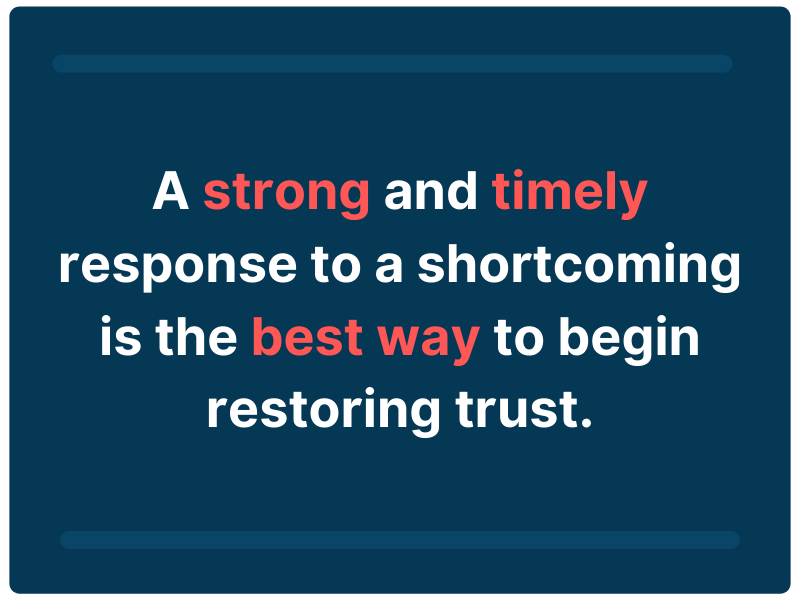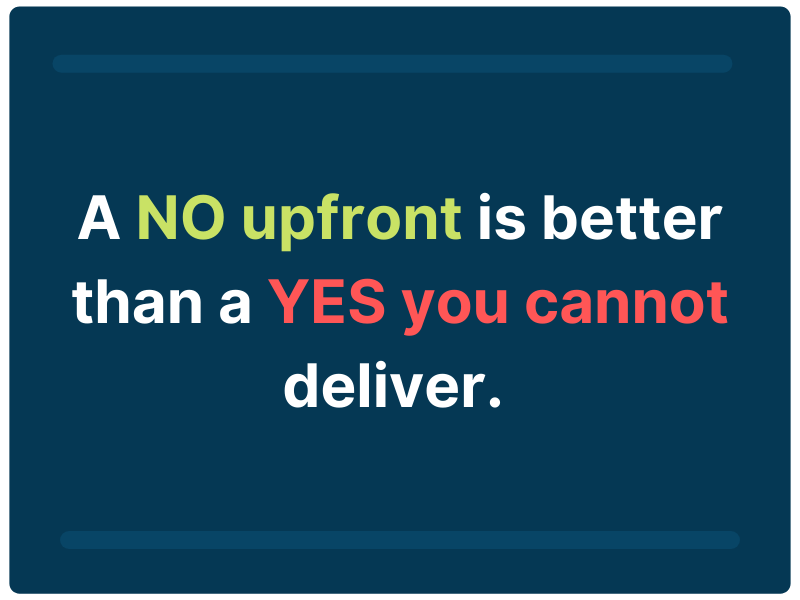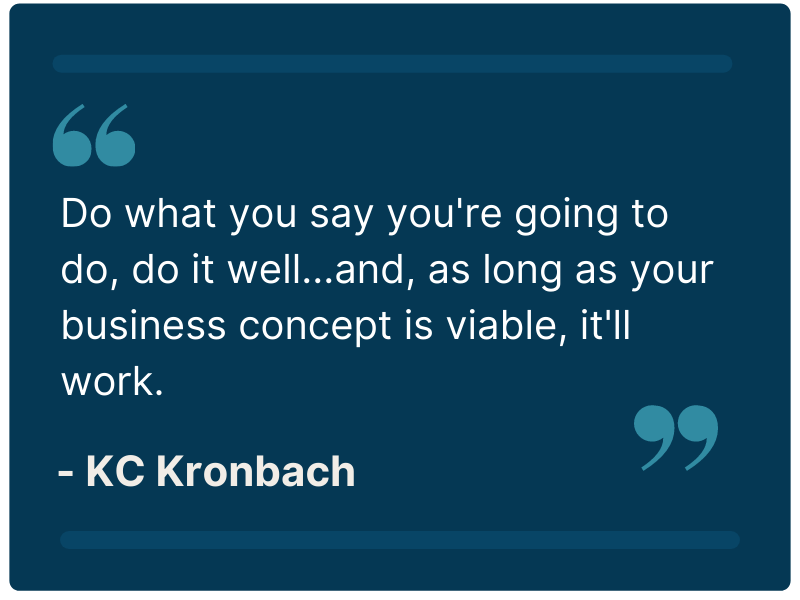The secret to long-term success? Customer confidence, satisfaction, and loyalty. So how do we build strong client relationships?
We’ve put together a list of 10 habits successful entrepreneurs are using to build strong relationships with their clients:
1. Know Your Client
Every client is an individual. For those providing individualized service, it’s essential to understand and address the unique needs of each client.
Studying your client’s needs not only increases your ability to help but also demonstrates your investment in their success.
In every interaction with your clients, prioritize this thought:
Am I communicating my commitment to understanding them as an individual with unique needs?
So how do you exhibit this commitment? By putting in the groundwork. Even before we sit down with a potential client for our Superpowers discovery call process, we conduct extensive research. We want to enter the discussion with a strong understanding of the client and their unique situation.
You can track down information about a potential client through numerous online sources.
Here are a few to get you started:
- Google Reviews
- Glassdoor
- The client’s website
- CrunchBase
![]()
When conducting your research, consider streamlining the process with a pre-established template.
Here are a few things to include:
- Their company vision statement (and other core values and motivators)
- Any short or long-term goals you can ascertain
- Recent growth/achievements
- Potential pain points where your product or service could be valuable to them.
2. Listen to Your Client
To understand your client the best, go right to the source.
During your discovery calls, prioritize listening over speaking.
Ask open-ended questions that will get them talking in detail. Avoid “yes” and “no” questions.
Here are a few examples:
- What is your company’s current main goal? What obstacles are preventing you from reaching it?
- Why are you considering (product/service)?
- In a perfect world, what would your personal and professional life look like in ____ years?
- What dangers like dropped balls or missed deadlines do you think are at risk without having the right help?
- What opportunities do you think you may be missing because you don’t have the right help?
3. Stay Up to Date
Building client relationships requires ongoing effort. What was right for them yesterday may not be right for them today.
Be aware of how things have changed for them. This will help you adjust your approach to their growth and needs. You may also identify entirely new needs.
- Stay engaged through media: Make sure you are frequently tracking their website, news mentions, and social media to remain aware of how you can best serve their needs.
- Establish a consistent schedule for connecting with your client about their needs. Consistent touchpoints allow you to hear directly from your client how their needs shift over time.
We champion the value of client check-ins. We have check-ins around the first 30, 60, and 90 days of a client’s contract. These check-ins provide 3 benefits:
1. They provide a space specifically designed for the entrepreneur to give adjusting feedback
2. They allow for continued idea exchange with the client
3. They help minimize blind spots in our and the client’s approaches. When we miss something, their perspective may allow them to catch it.
4. Be Your Clients’ Biggest Fan
Acknowledge and celebrate your clients’ personal and professional successes.

Use your social media accounts – your personal and your business’s – to engage with their business’s social posts and updates. Be their biggest fan and supporter.
If you have exchanged personal social media with your clients, you can also engage and be supportive there when suitable.
But we get it – life is busy. Actively keeping tabs on your clients can seem unattainable when you are juggling so many other tasks. Fortunately, an Executive Assistant can help you build strong client relationships.
So as a part of our Superpowers Curriculum, Coaching, and Community, our assistants receive training on representing their entrepreneurs through social media. They post and engage with important business and personal connections through your social media account.
While you focus on your work, they can maintain your presence on social media and keep you updated on important changes in your clients’ lives.
![]()
Track your client’s important dates in your calendar, with a reminder the day of and one the week before, so you have time to prepare something for them.
5. Engage Common Interests
Strive to find common interests and connections with your clients. Find opportunities to discuss, or engage in, a common interest together:
- Do you share a common hometown/state/alma mater?
- Do you share a hobby?
- Are you both fans of a sport/team?
These interests can fuel amicable conversations, and they are a fun way to step away from the office and build meaningful connections with important professional connections.
What’s more, these outings can help you understand your clients holistically and personally, equipping you to better help them professionally.
![]()
Relationship building is often the most valuable thing you can do as an entrepreneur, but it can fall to the wayside as routine administrative tasks get in the way.
An assistant can again be the solution, taking routine tasks off your plate and giving you the freedom to focus on high-value relationships with your clients.
6. Embrace Integrity and Honesty
Be open and honest, don’t put on a “superman” persona. This lack of honesty slows progress and will eventually damage your client’s trust. Instead, communicate promptly when you have hangups, questions, and things you need clarity on.
Nonetheless, approach transparency strategically. Haphazard sharing of information disconcerts clients and they may lose confidence in you. Instead, remember: bring solutions, not problems.
If you must bring a problem or question to them, do all the groundwork you can beforehand. Know exactly what you need from them, and fill in all the other blanks around the part only they can address.
Make a mistake? Own it. Diverting blame or hiding the problem erodes trust more than the original mistake.
Remember to be “already on it” when you reach out to the client; have viable solutions already in the works. A strong and timely response to a shortcoming is the best way to begin restoring trust.

7. Set Expectations Upfront
Expectations for yourself:
At the beginning of your relationship, in writing and in conversation, clearly lay out what you plan to do and your criteria for successfully delivering your service or product.
Provide a general timeline of your process. Ensure they feel comfortable with your success criteria and the timetable you set.
Expectations for them:
At Superpowers, we require a six-month commitment. We want to ensure our clients understand that progress takes time. They need to invest their time to see valuable returns.
Discuss anything they need to deliver: What deadlines do they need to meet? Do they need to complete any tasks or reports to ensure your efforts are successful?
This mutual accountability sets the scene early and leads to mutual respect and optimal results.
Expectations for what’s possible:
As the expert in the relationship, it is important to listen to their needs and accommodate as much as possible, but you must also be honest when their expectations are unrealistic.
Unrealistic deadline? Expecting results your service/product does not provide? Be upfront about this.
Your client will respond better to a”no” upfront than a “yes” that cannot be delivered upon. If they do not receive this corrective explanation well, they may not be a match for you, and you have saved yourself time by having this discussion upfront.

8. Communicate Intentionally
Do you make it abundantly clear how you plan to communicate with your clients?
First, Establish a schedule for consistent communication. Consistent touchpoints are essential to remaining aware of your client’s needs as they shift over time.
We champion the value of client check-ins. We have check-ins around the first 30, 60, and 90 days of a client’s contract. These check-ins provide 3 benefits:
1. They provide a space specifically designed for the entrepreneur to give adjusting feedback
2. They allow for continued idea exchange with the client
3. They help minimize the blind spots in our and the client’s approaches
Remember, give them consistent updates. Discuss with your clients how often, or at what stages, you will be providing updates. Then follow through. Your client will deeply appreciate knowing how things are progressing and seeing the concrete returns on their investment.
![]()
Ensure open lines of communication. Does your client know how they can get ahold of you? Do they know when you are available to reply or pick up the phone?
Provide phone numbers, emails, and any other lines of communication, along with times you are able to respond.
Consider: How do they get ahold of you for routine questions? How about emergencies?
In your company, you may need to set an internal protocol for what is appropriate for different clients.
9. Respect Their Time
Make sure every interaction with them is intentional, deliberate, and valuable.
Your client is paying you to give them some advantage in their time and efficiency. You don’t want to detract from that advantage through inefficient interactions that drain their time and produce insufficient value.
Are you sending them an email? Before you send them that email, does it provide valuable information or discuss a necessary action step they must take? Is the messaging clear and easy to read quickly?
Are you having a meeting? Prepare an agenda, know what you need to discuss and what questions they may have. Ensure you have all the supporting materials readily available before you start.
Avoid being a roadblock to their schedule. Build a system to flag time-sensitive messages from your clients, so you can reply promptly.
![]()
As a busy entrepreneur yourself, it can be difficult to track every message coming into your inbox. Fortunately, an Executive Assistant can streamline the process for you.
While you focus on your work, they can keep a watchful eye out for important messages and promptly notify you as they come in.
10. Deliver and Overdeliver
Business owners often overcomplicate entrepreneurship – the simple secret to success is delivering on your promises.
On a recent The Next Level Show podcast, the successful entrepreneur KC Kronbach said it best: “Do what you say you’re going to do, do it well, follow through…and, as long as your business concept is viable, it’ll work.”

From the onset of your relationship, you communicate clear expectations for the relationship. What is your promised outcome? What key actions will you be performing to reach that outcome? Follow through and exceed the expectations you set.
![]()
Ensure your clients experience across-the-board excellence from you. Not just in the service or products you provide.
Maintain polished, authoritative branding. Ensure your communications, platforms, and content are clean, cohesive, and professional. Your visuals and language can make or break your client’s impression of you.
Bonus: Thank Them
A simple “thank you” can go a long way. Intentionally express appreciation:
- Verbal Thank yous – Send written/spoken thank yous by email, postcard, video, written letter, etc. A good time to send a thank you is an anniversary or another milestone in your professional relationship – or general milestones for your company and theirs.
- Help solve peripheral problems – Help them solve problems that are outside of the main scope of your service. Go out of your way to do it yourself or give them a referral to another service that can help. Selfless actions go a long way as a thank you.
- Give gifts – Hold giveaways and/or send gifts directly to your clients. Even small gifts can go a long way.
- Provide exclusives – Launching a new product or service? Give current clients early access or exclusive pricing. You may also consider exclusive incentives based on a loyalty program. Exclusives may be special training, pricing, or product/service packages.
Conclusion
These are 10 (+1) habits to help you build strong client relationships! Today is the best day to start implementing these powerful strategies!
Have any other strategies you find useful? Feel free to share them below!
An Executive Assistant can help you track, facilitate, and entirely handle many of these high-value habits for you. They can also free up your time so you can focus on these high-value relationships.
Interested in learning about an Executive Assistant? We’re happy to discuss the process with you! Book a discovery call today!






